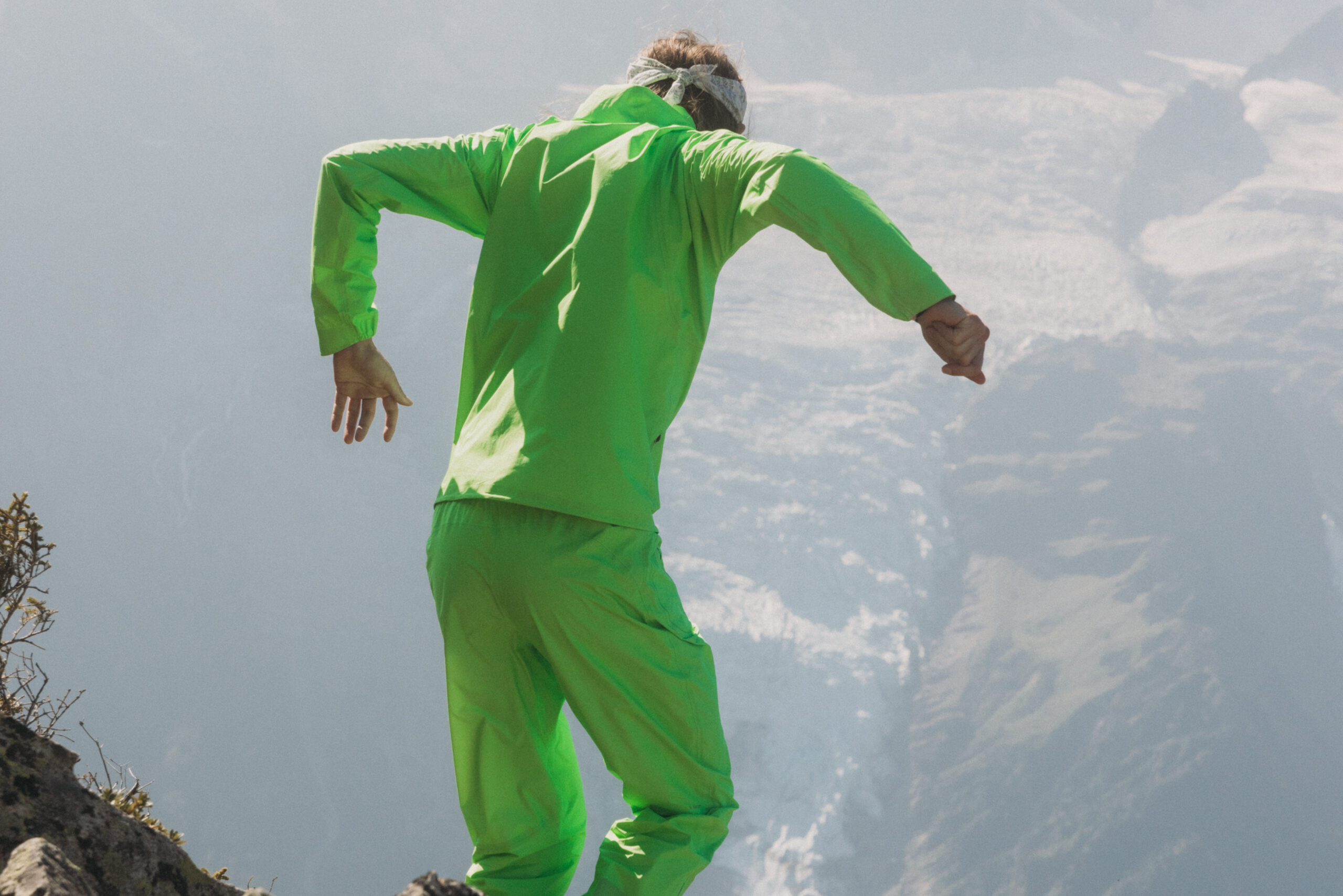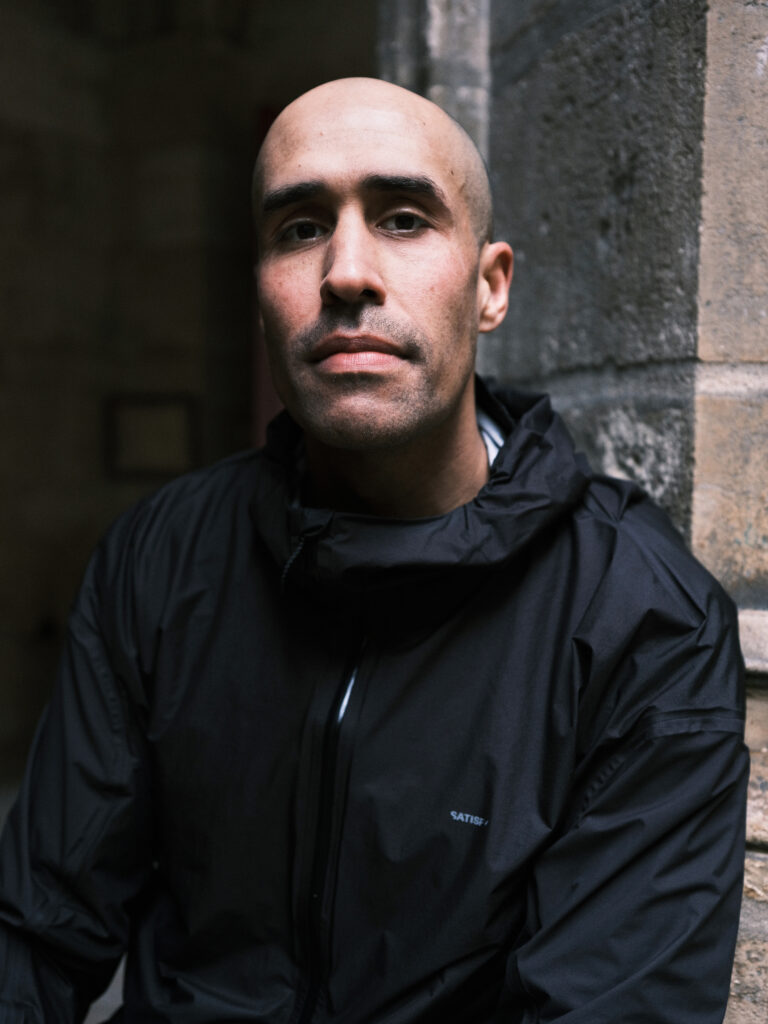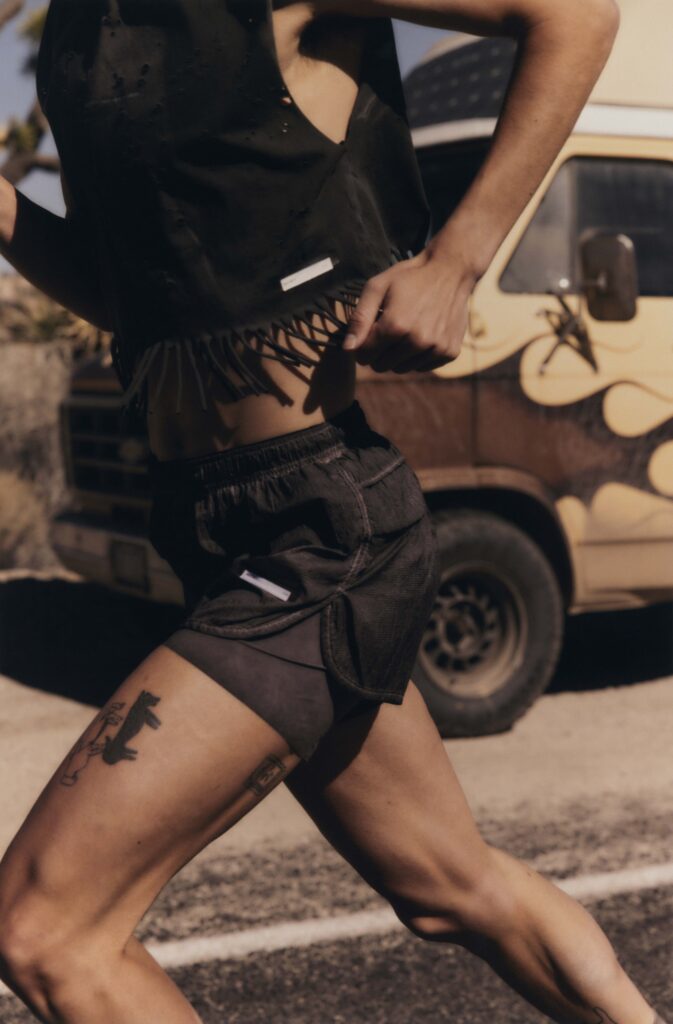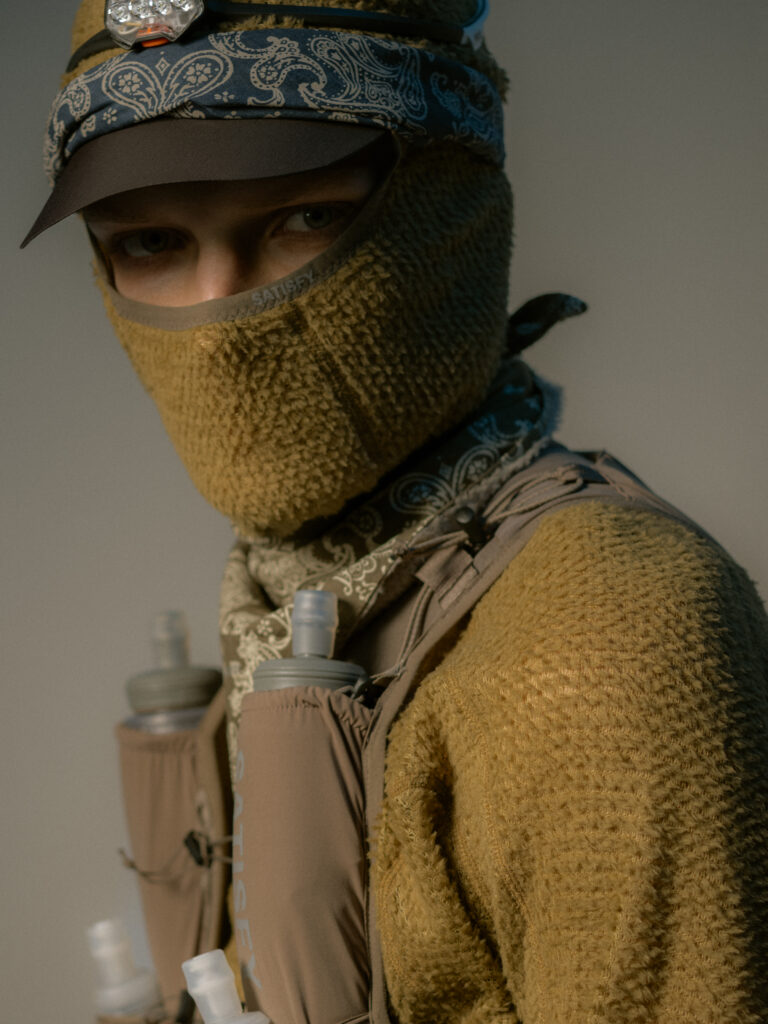
Finnish Siidaa Aberra is at the frontlines of the booming running apparel market
Finnish-born Siidaa Aberra is the Chief Supply Chain Officer for Satisfy, a Paris-based sensation leading the global running trends both on and off-track.
The Zoom connection crackles in the Parisian morning as Siidaa Aberra pops into the screen smiling. Dressed in a casual hoodie and a colourful scarf, Aberra exudes laid-back charm.

“I don’t actually have a background in the sporting apparel business”, he laughs, “I come from fashion and the luxury segment.”
Siidaa Aberra graduated from the University of Art and Design Helsinki, now Aalto University, in 2009. Some might even remember his entry into the 2009 Fur Fair in Milano–and the colourful sweater made from mink that gained him second place in the prosperous competition.
Hailing from Eastern Finland, Aberra ended up in Paris by chance after graduation. “I have always worked with things that I find interesting. Before working for Y/Project, I worked for Tuomas Merikoski’s brand Aalto, among other things.”
Before working for the French luxury brand Y/Project, founded by Gilles Elalouf, Aberra worked as a freelancer making his way from jewellery to fashion distribution. “It was a good school,” the then-designer says.

In Paris, another opportunity knocked. “My neighbour happened to be the Head of Press for Satisfy, a leading running apparel brand, and he ended up giving me some products. Upon discovering the level of quality of these things, I noticed that, after years of having bought Nike, Asics and so on, the materials used by Satisfy are in a league of their own.”
Aberra would know having himself been an avid runner for the past six years. “One of the most important pieces of equipment a runner can have is a great pair of shorts and the design process behind the Satisfy product is on a whole new level of mechanics and ergonomy.”
Now, for those not in the know, the shorts produced by Satisfy seem lighter, shorter–and somehow much sexier than those produced by peers. Whether it has to do with the earthy tones, crisp fabrics or the marketing imagery that gives off a rugged air, Satisfy seems to be touching every running trend at the moment.
“When things clicked with Satisfy owner Brice Partouche, I decided to jump onboard,” Aberra says, “by then I also wanted to actually be in the sporting business.”
What made Aberra want to move from the luxury segment of fashion to the sweaty world of sporting goods?
“Pretty much everything, since I no longer found any substance within fashion. Nothing interesting enough to drive me and in the end, working in fashion started feeling tedious and mindless. I wanted to work in an environment that I would like to engage in even outside of work.”
”I wanted to work in an environment that I would like to engage in even outside of work.” Siidaa Aberra

According to Finnish runners Jaakko Suomalainen and Henrik Aikio the local running scene in Helsinki is similarly booming and along with the trend comes the push for better gear.
“Running groups are now bigger than ever,” says Aikio who works as an industrial designer, “and at the forefront of trends are often people who work in creative fields that are very understanding of subcultures and genres. Early adopters when it comes to anything new.”
Suomalainen agrees, “Within the sporting segment, brands are getting inspired by phenoma from outside of running like trash metal, skateboarding and hardcore punk. The aspects that are considered cool can be adapted and the fashion segment is often quick to take these on and commercialise them.”
“I see it as a layered approach”, Suomalainen explains further, “the designers and developers are not necessarily runners themselves but rather translators who see the sport as an aesthetic that can be shared between friends and communities. They create their own influences that might not get adapted by the larger crowds immediately but after a while, it will sink in.”
”The designers and developers are not necessarily runners themselves but rather translators who see the sport as an aesthetic.” Jaakko Suomalainen
“Similarly, fashion trends and influences get hated on at times, only to be picked up, understood and loved by the masses later”, Suomalainen says.
Both are quick to remind that most runners are not interested in fashion or the aesthetic of the sport. Even in the case of Satisfy and similar brands, hype often happens in small niche groups.
When it comes to the Finnish running scene, apparel does not always reek of identity. Many wear running shoes straight from the shelves of the local sporting goods store. While running wear aimed at the masses often anonymises the user in a way that, often, what people wear says little about what they do for a living, for example.
“Yet the fashion forward approach has been very visible after the pandemic. A wave of athleisure that became popular particularly with office workers. Many were able to let go of norms at the office to be comfortable in times of change,” Aikio says, referring to the rise of the hybrid style of athletic clothing worn as everyday wear. Outfits that include the use of sneakers, shorts, leggings and tracksuits. Exercise clothing that seamlessly transitions into the corporate environment.
Sporting apparel now needs to adapt into the everyday, but there is nothing new to running and fashion getting entwined, says Suomalainen. “In the 70s and 80s sporting apparel was notoriously made of lycra, reminiscent of swimming apparel. Athletes such the legendary Jacqueline Joyner-Kersee wore mismatched tights with one leg shorter than the other, in bright colours with impeccably long nails that matched the outfit. Fashion in sport was much more flamboyant back then.”
People have always gotten together to run but what makes the sport so popular now, is the ability for social media to push for trends. Still, long-time runner Suomalainen adds, “running trends tend to come and go.”
According to Aberra, running gear is big business. The global men’s premium performance apparel market reached 4,4 billion USD in 2021, growing into 5,5 billion USD in 2024. The market is expected to grow further, reaching 7 billion by 2027.

“I believe that Satisfy is punching way above its weight in the most positive way,” he says.
Indeed, with the fiscal year ending in February, the company will see eight figure outcomes.
And, “Our plan is to reach above 100 million euro revenue for the year 2029.”
Sounds quite wild, but Aberra is convinced. “Our online store sales have grown by +80% year-on-year. We have built a strong B2C market and our collaborations such as the one with HOKA have sold out within minutes. Meanwhile, our global distribution is only beginning.”
Aberra used to be a lone runner for many reasons, leading to him never really getting on the group training trend. Something which the neighbour ended up changing. An invitation to run with the Satisfy group made Aberra rethink his position. “The brand is so comprehensive. The way the running group is built, how the image of the brand is constructed and how the visual world communicates.”
“People either love it or don’t but we have no reason to push and sell. Satisfy operates very similarly to the luxury segment, you do not have to like us but those who do, are welcome to join.”
